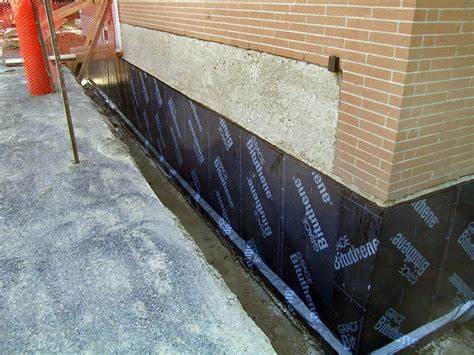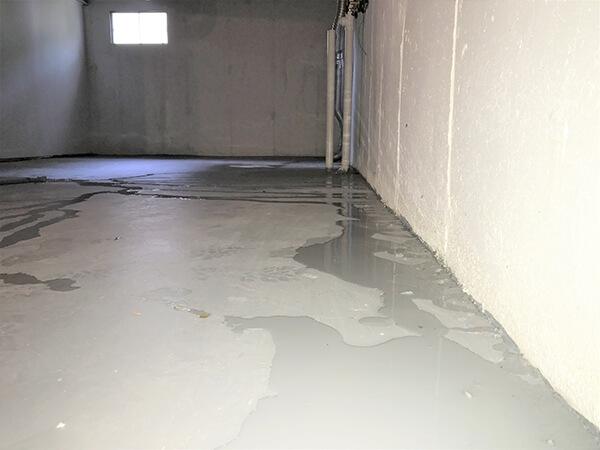How Basement Waterproofing Helps Preserve Property Value and Indoor Air Quality
Just How Cellar Waterproofing Functions: A Comprehensive Overview for Your Home
Cellar waterproofing is necessary for protecting homes from water damage. Various techniques exist to deal with dampness problems, each tailored to particular causes. Home owners must comprehend these choices to pick the very best service for their needs - Exterior Drainage Solutions. The efficiency of these methods depends on the appropriate materials and techniques. What are one of the most usual approaches, and how can they be implemented effectively? This guide will discover these critical facets
Comprehending the Root Causes Of Basement Moisture
Although cellars are commonly made to be dry and useful areas, they can succumb to dampness due to numerous aspects. One key reason is inadequate drainage around the foundation, which can lead to water pooling and infiltration. In addition, heavy rainfall or fast snowmelt can overwhelm drainage systems, aggravating dampness issues. Another considerable factor is the natural moisture present in the ground, which can penetrate via floorings and walls, specifically in older homes with much less reliable barriers. Splits in the foundation might likewise allow water invasion, particularly throughout periods of hefty rainfall. Moreover, plumbing leaks within the basement can contribute to moisture build-up, creating a setting favorable to mold growth. Lastly, insufficient air flow can catch humidity, aggravating the total dampness trouble. Recognizing these reasons is essential for home owners looking for effective options to avoid cellar moisture issues.
Sorts Of Cellar Waterproofing Methods
Cellar waterproofing techniques are vital for shielding homes from dampness damage and keeping a secure living setting. These techniques can be broadly categorized into exterior and interior remedies. Inside waterproofing typically includes the installment of water drainage systems, sump pumps, and vapor barriers. These systems function to divert water away from the cellar and protect against dampness from penetrating through the wall surfaces or floor.On the various other hand, outside waterproofing concentrates on stopping water from going into the home in the top place. This can include excavation around the structure, using water resistant coverings, and installing drainage ceramic tiles to redirect water far from the framework. Additionally, some house owners may select a combination of both exterior and interior approaches to guarantee comprehensive defense. Ultimately, the selection of waterproofing approach relies on the certain conditions of the home and the level of moisture existing in the cellar.
Products Made Use Of in Waterproofing Solutions

Various products are utilized in waterproofing solutions to enhance the efficiency of both interior and exterior techniques. Frequently used materials consist of fluid membrane layers, which create a smooth obstacle versus dampness. These membranes are normally made from polyurethane or rubberized asphalt, offering versatility and longevity. In addition, cementitious waterproofing items are popular for their ease of application and strong adhesion to surfaces.For exterior applications, materials such as water drainage boards and geotextiles are reliable in rerouting water far from structures. Squashed rock and gravel are additionally used in water drainage systems, promoting proper water flow and reducing stress accumulation. Sometimes, specialized sealers and finishes, like silicone or epoxy, are related to give additional protection against water infiltration. With each other, these materials play an essential duty in making certain that a basement stays dry and protected from water damages.
Steps to Waterproof Your Cellar
Waterproofing a cellar includes a methodical strategy to recommended you read effectively protect against water breach and damage. The initial step is to examine the outside of the home, looking for cracks or spaces in the structure. These must be sealed with a proper waterproof sealer. Next, validate that downspouts and seamless gutters are working properly and routing water away from the foundation.After resolving outside concerns, the inside ought to be evaluated. Mounting a water-proof membrane on cellar wall surfaces can supply added defense. Exterior Drainage Solutions. It's likewise advisable to apply a sump pump system to handle any type of water accumulation.Finally, rating the landscape around the home can aid route water away from the structure, additional reducing the risk of water infiltration. By adhering to these steps faithfully, home owners can develop a durable defense against cellar flooding and dampness issues
Maintenance and Prevention Tips for a Dry Basement
Normal upkeep and positive procedures are crucial to guaranteeing a completely dry basement long after initial waterproofing efforts. Home owners should regularly evaluate gutters and downspouts, guaranteeing they straight water away from the foundation. It is important to keep these free from particles to stop overflow. In addition, maintaining appropriate rating around the home aids network water far from the structure.Checking for fractures in walls or floorings is critical, as these can enable moisture infiltration. Any kind of identified splits need to be without delay secured with suitable products. Furthermore, mounting a sump pump can offer extra protection versus flooding.Humidity levels in the basement must likewise be monitored, as high humidity can result in mold development. Making use of a dehumidifier can help keep a comfy atmosphere. Guaranteeing correct air flow in the basement help in lowering dampness buildup, maintaining the honesty of the waterproofing system over time.
Frequently Asked Questions
How Long Does Cellar Waterproofing Usually Last?
The longevity of cellar waterproofing frequently varies based upon materials and setup high quality. Commonly, it can last from 5 to one decade, with some systems possibly withstanding longer if appropriately kept and kept an eye on over time.
Can I Water-proof My Basement Myself?
The specific considered whether to water resistant their cellar separately. While do it yourself options exist, they call for expertise of products and strategies. Professional solutions assure effective outcomes, often exceeding the prospective risks and difficulties related to self-installation.

What Are the Indicators of Inadequate Waterproofing?
Indications of inadequate waterproofing consist of relentless wetness, mold growth, moldy odors, peeling off paint, and water spots on wall surfaces or floors. House owners must address these concerns promptly to avoid further damages and maintain a healthy living setting.

Does Cellar Waterproofing Rise Home Value?
Basement waterproofing can improve a home's worth by avoiding water damages and enhancing habitable area. Potential customers usually focus on completely dry cellars, making waterproofing a beneficial financial investment that contributes to overall home allure and marketability.
Exactly How Much Does Cellar Waterproofing Cost typically?
The average price of basement waterproofing usually ranges from $1,500 to $5,000, differing based on factors such as job size, method utilized, and local market Get More Info conditions. Homeowners should get multiple quotes for exact estimates. Cellar waterproofing is essential for protecting homes from water damages. Cellar waterproofing techniques are necessary for safeguarding homes from moisture damage and maintaining a risk-free living setting. These systems function to divert water away from the basement and protect against dampness from penetrating with the wall surfaces or floor.On the other hand, outside waterproofing focuses on stopping water from getting in the home in the read what he said first place. The long life of cellar waterproofing often varies based on materials and installment high quality. Cellar waterproofing can boost a home's value by preventing water damages and improving habitable area.